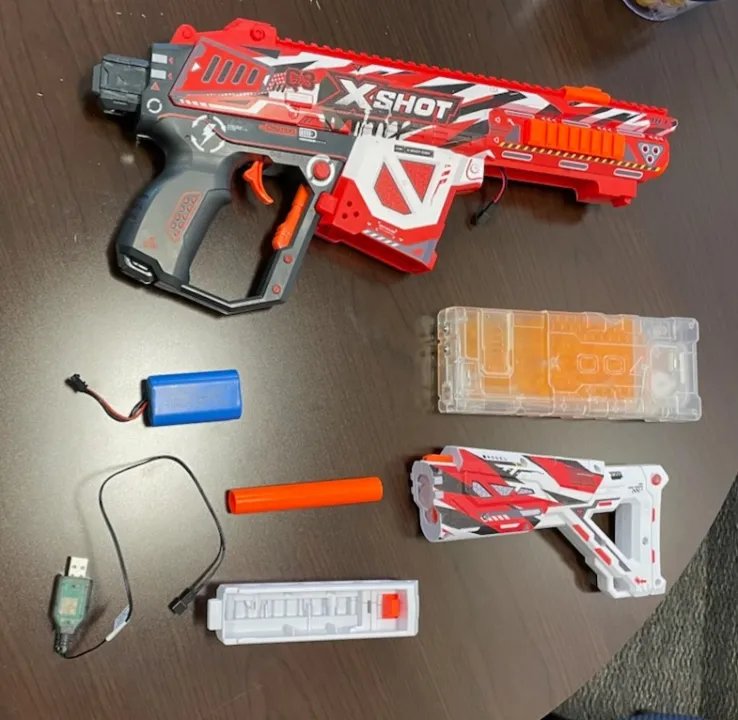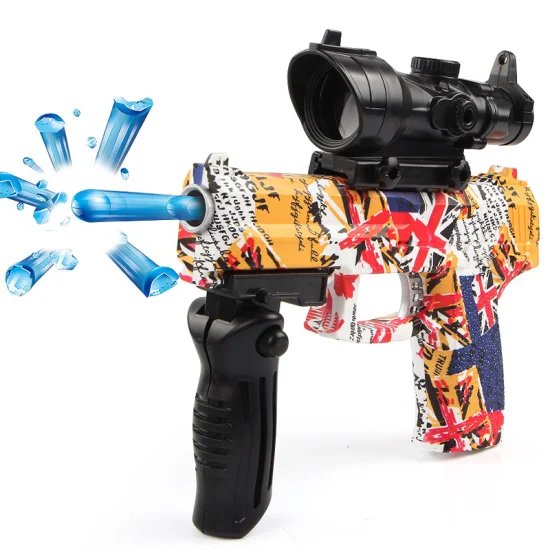5 Reasons Your Gel Blaster Won't Shoot Properly2024-05-17
Gel blasters are all the craze for backyard warfare fun. But it's a real bummer when your blaster isn't shooting right, whether it's not firing at all, weak shooting power, or constant gel jam-ups. There's nothing worse than prepping for an epic blaster battle only to have your gel gun let you down. Luckily, there are usually some simple reasons behind gel blaster shooting failures that are easy to troubleshoot. This guide will cover the top culprits that can cripple your blaster's performance - from using the wrong types of gel ammo, to battery problems, gunked up barrels, worn out parts, or even user errors from improperly modding or reassembling it. With some basic blaster smarts and maintenance, you can get your trusty gel shooter back to peak performance and maximize those blasting good times.
Reason #1: Wrong Gel Ball Size or Hydration
Using Undersized Gel Balls
If the gel balls you're using are even slightly smaller than what your specific blaster model is designed for, it can severely impact performance. Undersized ammo won't create a proper air seal in the barrel and chamber. This causes weak firing power at best, or more likely, complete shooting failure where the gel balls just roll out the barrel opening. Always double check you have the correct ammo diameter for your blaster.
Not Hydrating Properly
Gel balls also need to be properly hydrated per the manufacturer's soaking instructions, not just thrown in some water. Underhydrated ammo that's too hard and stiff is a prime cause of barrel jams and feeding failures. But overhydrated gel balls that are a soggy mess can also lead to shooting issues by breaking apart and leaking gel residue inside the blaster.
Using ammo in the wrong size or hydration state is just asking for constant shooting problems and jamming issues. Following the ammo specs for your blaster is crucial for keeping it firing smoothly. Don't just use any old gel balls!

Reason #2: Jammed Magazine or Feeder
Gel Balls Left Loaded
One of the biggest sources of magazine/feeder jams is leaving gel ammunition loaded in your blaster when not in use. The gel balls can deform over time - shrinking and drying out in the magazine, or expanding and getting mushy in the barrel. This leads to obstructions that prevent fresh ammo from feeding properly.
Clearing Jammed Magazines
If you suspect your magazine is jammed, don't try to force it. Carefully follow the manufacturer instructions for safely disassembling the magazine components. Use a thin rod or cleaning strip to carefully dislodge any stuck or deformed gel ammo remnants that are blocking the feeder path without causing further jamming.
Cleaning the Feeder Mechanisms
In addition to clearing the jammed magazine, you'll want to fully clean out any dried gel residue from the feeder tube and mechanisms that load each gel ball into the firing chamber. Built-up residue can gradually cause more frequent jamming over time.
Preventing future feeding jams is as simple as never storing your blaster with the magazine loaded, and routinely cleaning the feeding mechanisms. A little blaster maintenance goes a long way!
Reason #3: Battery/Power Issues
Using the Wrong Battery Type
Many gel blaster shooting performance problems can be traced back to using the incorrect battery type. The blaster's internal mechanisms rely on a very specific voltage and capacity to cycle properly for firing and feeding. Using too weak of a battery will result in poor velocity and inconsistent firing. But using an overpowered battery can potentially fry the blaster's electronics.
Low Battery Warnings
Another common power-related issue is simply not paying attention to when your blaster's batteries are running low on charge. As the battery depletes during use, the firing performance will steadily drop off until no longer functioning at all. Most blasters will have low battery indicators you need to stay aware of to avoid shooting failures from drained batteries in the middle of a blaster battle.
Proper Battery Care
To ensure consistent shooting performance, always use the exact battery type and voltage specified by your blaster's manufacturer. Follow any instructions for safe battery charging and storage as well. With genuine, properly charged batteries installed, your blaster should cycle flawlessly and maintain consistent firing velocity.
Ignoring your blaster's battery requirements and power levels is just asking for misfires, shooting inconsistencies, and overall poor blaster performance. Stay charged with the right batteries!
Reason #4: Blocked Barrel or Internal Obstructions
Identifying Barrel Obstructions
If your gel blaster is firing but with dramatically reduced power and velocity, there's likely an obstruction in the barrel preventing proper air seal and acceleration. Carefully look through the barrel opening and use a ramrod or pull-through cable to dislodge any stuck gel remnants or debris you see blocking the path.
Checking for Internal Clogs
Even if the barrel looks clear, weak firing can also signal a clog or build-up of gel residue further inside the blaster's internal chambers and tubing. Depending on your model, you may need to partially disassemble the blaster to inspect and clean out internal areas.
Preventing Future Obstructions
The best way to avoid barrel obstructions and internal clogs is with regular cleaning and maintenance. After every Heavy use, follow your blaster's instructions for properly breaking it down and cleaning each component with the right solvents. This prevents gel residue from accumulating over time.
Don't let built-up gunk and debris clog up your blaster's internals and barrel. Staying on top of cleaning will ensure you maintain maximum firing performance shot after shot.
Reason #5: Damaged or Worn Components
Signs of Wear and Tear
Over time and extended use, critical components inside your gel blaster can start to wear down and degrade. Signs that blaster parts may be worn include:
● Inconsistent velocities and firing power
● Frequent jamming issues
● Leaking air/gas from seals and gaskets
● Rough cycling and loud operation
Any of these can indicate airseals, O-rings, springs, or other small parts need replacement.
When to Replace Components
Most blaster manufacturers provide guidelines on when to inspect components for wear and roughly how long parts like seals and springs should last. But intense use and lack of maintenance can accelerate wear. If shooting performance suffers significantly, it's likely time for new components.
Replacing Worn Parts
Consult your blaster's manual and any online resources for safe disassembly instructions to access and replace worn internal parts. Make sure to use genuine replacement components from the manufacturer or trusted sources to ensure proper fit and function.
Periodically inspecting for wear and replacing failing components will keep your gel shooter firing like new for blaster wars to come.

Stay Shooting With These Blaster Tune-Up Tips
A little preventative maintenance and blaster know-how go a long way in ensuring your gel shooter always fires smoothly. Using the properly sized and hydrated gel ammo is key, as is never storing your blaster loaded. Pay close attention to battery levels and only use the recommended type to avoid power issues. If you notice weak velocities or jamming, carefully inspect and clean out any barrel obstructions or internal buildup. And don't forget to check for wear on critical components like seals and springs - replace them promptly if showing signs of degradation. Keep these tune-up tips in mind to stay blasting!
- Company Info
- About Us
- Contact Us
- Customer Reviews
- Blogs
- Brands
- YouTube Videos
- User Center
- FAQ
- Forget Password
- My Orders
- Tracking Order
- My Account
- Register
- Affiliate
- Company Policy
- Locations We Ship To
- Payment Methods
- Shipping Policy
- Refund Policy
- Privacy Policy
- Terms of Service
- Disclaimer
- Contact Us
ZHENDUO Electornics Technology LLC
Address: 7200 MISSOURI AVE,Denver,CO,United States,80202
Contact number: (626) 215-2450
Email address: xiewentao@zhenduo.email

